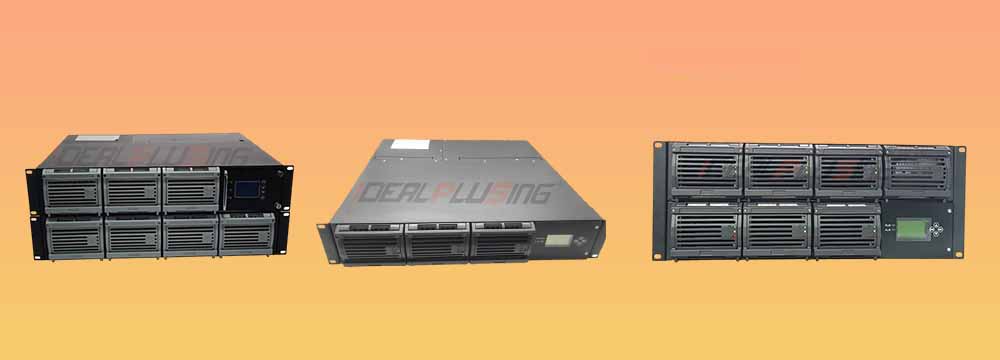Communication switching power supply technology was introduced into my country in the 1980s and has been widely used in the field of communications. Since the performance of communication switching power supplies directly affects the reliability of communication systems, it is particularly important to correctly judge the quality of communication power supplies. It is obviously not enough to measure the quality of switching power supplies only from the input and output characteristic indicators of the power supply. We should also start from the following aspects.
Power devices
Communication switching power supply technology belongs to power electronics technology. It uses power converters to convert electric energy. Therefore, it is easy to infer the approximate development age of the product from the type of power devices. We know that high-power silicon rectifiers and thyristors appeared in the 1960s; thyristors, giant power transistors (GTRs) and gate turn-off thyristors (GTOs) for high-power inverters were produced in the 1970s; power field effect transistors (MOSFETs) appeared in the 1980s; insulated gate bipolar transistors (IGBTs) are devices that appeared in the 1990s.
It should be noted here that the power field effect tube significantly reduces the switching time due to unipolar multi-carrier conduction, so it is easy to reach a switching operating frequency of 1MHz. However, in order to increase the blocking voltage of the device, the drift region of the device must be widened, resulting in a rapid increase in the internal resistance of the device, an increase in the on-state voltage drop of the device, and an increase in the on-state loss. The insulated gate bipolar transistor is similar to the power field effect tube in structure. The difference is that the insulated gate bipolar transistor adds a P+ substrate (the collector of the insulated gate bipolar transistor) to the N+ substrate (drain) of the N-channel power field effect tube. This improvement makes the insulated gate bipolar transistor have a series of outstanding advantages: forward bias, high input impedance, low on-resistance, high withstand voltage, large safe working area and high switching speed.
Circuit Principle
1. It depends on whether it uses hard switching technology or soft switching technology. Various lossless buffer circuits composed of LC passive components and fast recovery diodes change the switching transition process of the switch tube, so that the change of the switching voltage and current is not abrupt (i.e. hard switching) but slow (i.e. soft switching), thereby significantly reducing the switching loss of the power device, increasing the switching frequency of the system, reducing the volume and weight of the converter, reducing the output ripple of the system, and overcoming the sensitivity of the conversion circuit to parasitic distributed parameters, reducing the switching noise of the system, widening the frequency band of the system, and improving the dynamic performance of the system.
2. It depends on whether it uses variable frequency control (PFM) or constant frequency control (PWM). Constant frequency control (also known as phase shift control) is better than variable frequency control. The full-bridge conversion circuit with phase shift control combines the advantages of constant frequency control technology and soft switching technology, realizes constant frequency control in a large range, realizes a large range of stepless adjustment of output voltage or current, and realizes zero voltage switch commutation at the moment of power device commutation.
3. Power factor correction technology can suppress harmonic currents on the grid side, reduce reactive power, and thus improve power factor, while reducing noise and pollution generated by higher harmonics of the power supply, thus achieving energy saving.
4. Load current sharing is a key technology, which reduces the output imbalance of parallel modules and enables the system to have redundant fault tolerance, making it easy to form a large-capacity communication power supply system. Currently, there are mainly droop current sharing method, master slave current sharing method, average current current sharing method, external controller current sharing method, and maximum current automatic current sharing method. The maximum current automatic current sharing method can realize both automatic current sharing of power modules and redundancy of power modules. The withdrawal and addition of power modules will not affect the normal operation of the system. The open circuit, short circuit and damage of the current sharing bus will not affect the normal operation of other modules in the system.
Protection and lightning protection measures
In addition to overvoltage, undervoltage, phase loss, overcurrent, short circuit, overload, and overheating, which are the protection functions we usually hope that the equipment can provide, we also need to know whether there are battery monitoring and charging current limiting functions. Whether imported brand-name lightning protection components (such as OBO, DEHN, FURSE, etc.) are used is also the basis for ensuring whether the system can be reliable and stable in the future.
Alarm function
When the system reaches the preset alarm level or the system fails, the monitoring module not only sends out sound and light alarms, actively dials to report the fault content to the central station or the superior bureau, but also automatically calls the pre-specified BP machine or mobile phone. For unmanned communication stations, this is undoubtedly an important basis for measuring the quality of power supply.
Monitoring interface
The use of computer technology to realize the telemetry, remote control, and telesignaling functions of communication power supply can improve the maintenance and management quality of the system, reduce the maintenance cost of the system, and improve the overall work efficiency. Therefore, having a remote communication interface is the minimum requirement for communication power supply. Similarly, the type of interface also reflects the technical content of the power supply from one aspect. Generally speaking, the Ethernet interface is better than the RS485 interface, and the RS485 interface is better than the RS232 interface.
Electromagnetic compatibility
This is the most easily overlooked aspect. As the capacity of the switching power supply increases, the harmonic pollution it generates has seriously affected other power loads (mainly electronic equipment) in the power grid. Therefore, in foreign countries, especially Europe and the United States, new industry standards have been formulated for the electromagnetic compatibility of power equipment. This makes us care about the quality of the selected power input and output filter characteristics and the rationality of the shielding structure, and also know whether it complies with CISPR 22 and CISPR 24 standards.
Although the communication switching power supply technology is a multidisciplinary cross-border technology involving power electronics, semiconductor devices, integrated automatic control, computer (microprocessor) technology and electromagnetic technology, it is not difficult to grasp the pros and cons of the switching power supply performance as long as you master some background knowledge and basic principles.
IDEALPLUISNG Power Expert:
We focus on the research and development, sales and services in the fields of DC-DC power modules, AC-DC rectifier modules, DC-AC inverters, AC power supplies, DC power supplies, LED power supplies, chargers, rectifier systems, etc., providing personalized, efficient, reliable and cost-effective power solutions for all walks of life.
Thank you for considering our services.







